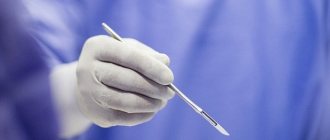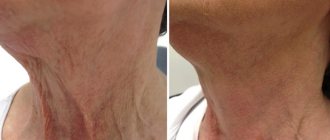A. A. Hmayakyan Dental surgeon, implantologist
Today, implantation surgeons rarely do without mucoplasty. This is a very important component of implantological rehabilitation, since high-quality soft tissues ensure patient comfort and a favorable treatment prognosis, both functionally and aesthetically.
There are patients (for example, with a thick mucosal biotype) for whom additional work with soft tissues is not indicated. In such situations, it is possible to achieve high-quality tissue volume around the implant without any plastic surgery. And there are those for whom work with soft tissues is indicated, consisting of several phases at different stages of treatment.
When is soft tissue plastic surgery necessary?
- Deficiency of soft tissue volume, as a result:
- long-term absence of a tooth (with edentia, atrophy occurs both in bone tissue and soft tissues);
- wearing a Maryland prosthesis (mechanical impact on soft tissues, even in a short period of time, leads to a loss of gum volume);
- thin biotype of the mucosa (here we are talking about the prognosis of future restoration and prevention of volume deficit of hard and soft tissues).
- Lack of attached keratinized mucosa due to:
- the need for directed bone regeneration or an already performed GBR operation (the suturing technique afterward is such that part of the keratinized mucosa is often lost, not counting the already existing atrophy);
- past mistakes during implantation or soft tissue plastic surgery.
- In order to improve the prognosis of treatment. Creating a reserve of soft tissue in the frontal region increases the favorable prognosis of treatment.
To achieve success, it is necessary to comply with parameters that must be taken into account at the planning stage. Some factors may influence directly, others indirectly. Factors such as the accuracy of sampling the SDT or SST, the processing method, the quality of the graft, the preparation of the material fixation zone and the quality adaptation to the receiving bed directly influence.
Indirect ones include careful planning and compliance with the surgical protocol (position, inclination and size of implants, correct choice of suprastructures, compliance with the necessary timing and stages of treatment).
Before we go any further, let's refresh our memory a little. The purpose of dental implantation is to restore a functionally and aesthetically missing element of the dental system. In the dental system, we are interested in bone tissue, mucous membranes, and adjacent teeth. The function of bone tissue is support, retention of the implant, perception and distribution of load. The function of the mucosa is to protect and nourish bone tissue and ensure adequate hygiene.
Based on the above, it turns out that for high-quality implant treatment it is necessary to have high-quality bone tissue in the right volume and the right place (if there is not enough, create it), and high-quality soft tissue (not only in volume, but also of the desired histological structure). Below are examples in different clinical situations.
Why are implants so expensive and is their price justified?
“The implant will cost about 50 thousand,” they were “delighted” in one of the Gubkin clinics. They explained this by saying that they would have to “build up” the gums. In Stary Oskol they asked for about 35-38 thousand for the same operation. Better, but still expensive. Damn, how much of that implant is there? Where do these prices come from? I saw the answer recently in Meddaily. Here's what the medical journal writes:
“An implant is not just a screw that is screwed into the bone, but a carefully calculated part that must withstand serious load. The patient’s health depends on the accurate calculation of all its parameters - the width and length of the implant itself, the size and pitch of the thread, its contour. Therefore, it is impossible to simply buy a milling machine and start producing implants. Before their actual release, serious research work and extensive clinical trials take place, and this requires not only money, but also time. It is clear that a serious company with extensive experience and a long history is superior to a young company a priori, says Konstantin Shmatov, dentist, surgeon, orthopedist, implantologist, candidate of medical sciences.
At one time, plate implants were popular. However, over time, it became clear that they do not overgrow with bone tissue, that is, the phenomenon of osseointegration does not occur. Fibrous tissue accumulates between them and the bone, and over time such implants have to be removed. Then root-shaped implants appeared, but without threads. They showed better results, but, nevertheless, were not yet absolutely reliable. Today, root-shaped implants with threads are recognized as the most effective. They are securely attached to the gums and quickly grow with bone tissue, blood vessels and nerves and become an inseparable part of the dental system. It is these implants that take root in 98% of cases.
Today, almost all implants are made from titanium. This is a very durable metal that does not cause allergies and allows for the phenomenon of osseointegration. The degree of purification of titanium directly affects the quality of the implant, that is, the purer the titanium, the stronger it is, and the more expensive it is, accordingly. And here high-precision equipment is required. It must calculate product parameters down to hundredths of a millimeter. Automatic production without human intervention detects defects, which always occur, and “throws away” up to 10% of products. But not all production facilities have automatic controllers.
Ultimately, the implant is placed into the bone to serve as a support for the artificial crown, and this part of the implant system is as important as the “screw” itself. The calculation of the load on the crown on the implant should be as clear as possible, because even minimal overloads can gradually lead to loosening and ultimately to rejection of the implant. The load of the orthopedic part is calculated using computer technology with modeling of various situations of using the implantological system. In addition, there should be a different implant system for each section of the jaw. The fact is that the density, structure and width of the bone differs in the upper and lower jaws, and the functions of the teeth also differ in the anterior and posterior parts, and the implants themselves and the crowns on them must take these points into account.
Many patients believe that the price of some premium implant models is just a “brand markup”. But the highest quality of their products is born from the direct efforts of the brand in the development, production and testing of its products. In other words, the patient can be confident in the quality of such products. And as proof, responsible companies provide a lifetime guarantee on implants. One such company is known to provide patients with a unique implant number. If necessary, the patient can contact its branch anywhere in the world, and the damaged implant will be replaced under warranty.
It is important for the patient to see evidence of the effectiveness of the system, for example, in the form of published research results, other documents, or doctor's brochures from the manufacturer. Another way to find out which implant systems you can trust is to contact premium clinics and ask what implants they work with. As a rule, such dentists value their reputation and cannot afford to use products of dubious quality.”
Clinical case No. 1
Simple implantation for long-term missing teeth. An implant is installed, GTR (guided tissue regeneration) is carried out using a SST (connective tissue graft), and a FDM (gingival cuff former) is installed. After 3-4 months you can begin prosthetics.
Rice. 1.
Fig.2.
Requires sacrifices
Of course, with breast augmentation, you really don’t want to think about the fact that someday you will have to end up on the operating table again or even develop some kind of disease. Therefore, implant manufacturers are trying to make products that will not let their owner down either in a year or in 20 or 30 years.
“Often when implants are installed, they are given a lifetime guarantee. But this only means that if any problems arise, the patient is obliged to provide new ones free of charge and perform the operation at the clinic’s expense. Damage to implants is quite possible - unless, of course, we are talking about a serious injury, a stab wound, strong compression or a poorly performed operation. In addition, even reputable manufacturers have defects. But in general, the risk of such situations occurring is estimated at only 1.5-3 percent of the total mass,” explains Melnikov.
“Some people are scared that they will have a foreign object in their body for decades. But this should be treated normally: in plastic surgery there are no direct indications for replacing implants after 5, 10, 15 or more years. In addition, there are currently no adequate alternatives to silicone implants. Of course, there are procedures for bust enlargement using fat tissue and fillers, and correction techniques with mesothreads. But all this gives a temporary and unpredictable effect,” shares Yuri Dikov.
Somewhat earlier, polyacrylamide gel was used in aesthetic medicine, due to which lips, buttocks, and breasts were enlarged. “As far as I know, many years ago Lera resorted to such a procedure, although she did not mention it. But now gels are officially prohibited due to the high risk of inflammation and complications,” says Yuri.
Clinical case No. 2
Plastic surgery using SST in 2 stages (after implantation, and during installation of FDM), to compensate for a greater soft tissue deficit than in case No. 1.
Rice. 3.
Rice. 4.
Rice. 5.
Rice. 6.
Indications and contraindications
Thus, it is necessary to either perform a classic tissue augmentation procedure or use a new splitting technique.
Indications for surgery using the splitting method are:
- insufficient volume of the patient’s hard tissues;
- resorption, that is, gradual resorption of tissue;
- thin gingival ridge;
- tissue atrophy.
This operation also has a number of contraindications related to the individual characteristics of the patient’s jaw structure:
- The width of the gingival margin is less than 2.5 millimeters. With such an initial volume of tissue, the remodeling process will not be able to proceed successfully.
- The patient's bone structure is too loose.
- The number of missing teeth should not be more than 4 units. More prosthetic units will place too much stress on the tissue.
In addition, the operation cannot be performed in the presence of certain violations:
- Oral infections.
- Dental diseases.
- Disorders associated with the hematopoietic system.
- Immunity problems.
- Infectious diseases in acute form.
- Allergic reactions to the drugs used, individual intolerance to the drugs used during the procedure.
Thus, before performing an operation using this technique, it is necessary to make sure that it is suitable for the patient in each specific case.
Clinical case No. 4
The same protocol for directed bone regeneration in a separate stage. The creation of the PCD zone and subsequently NTR using SST is carried out after implantation.
Rice. 7.
Rice. 8.
Rice. 9.
The conditions for achieving success are:
- Qualitative translation of SDT into SST. Careful removal of the epithelium, since the presence of pieces of epithelium on the SCT will, at best, complicate the healing process.
- Achieving immobility of the graft in the recipient area, which makes it possible to receive adequate nutrition.
- Correct position of the implants. The proximity of implants to each other may not allow the creation of the required volume of soft tissue. The buccal inclination of the implant and/or the buccal position worsens the aesthetic prognosis of the future restoration, also from the soft tissue side.
Is it possible to perform bone grafting at the same time as implantation?
Modern dentistry suggests that in some cases, one-step bone grafting with implant fixation is possible. Such surgical intervention is performed for minor bone deficiencies, when the artificial root will still be fixed in the gum itself. Patients often require immediate implantation because they do not want to go through surgery again. However, the decision on the possibility of combining two manipulations is made solely by the doctor, assessing the likely risks and possible consequences of such a reduction in the duration of treatment.
Complications when working with soft tissues
When taking SST or SDT:
- loss of material (the assistant may accidentally aspirate the graft, which entails an increase in the donor zone, or there is a need for another zone);
- taking the wrong volume of material (if there is not enough, it will be necessary to add it in a separate fragment, which complicates the process of fixing the grafts and increases the duration of the operation);
- bleeding in the immediate or delayed time after taking the graft from the palate (increased healing time, discomfort for the patient).
Particular attention should be paid to the technique of collecting SDT and SST, and the technique of suturing on the palate, to ensure comfortable healing and the absence of significant discomfort for the patient during the period of regeneration of the donor area.
Rice. 10.
In preparation:
- insufficient cleansing of epithelium;
- perforation or injury to the flap;
- drying of the graft (humidity throughout the operation ensures the viability of the graft).
When fixing:
- too much suture material (impairs blood supply and injures the graft, complicates vascularization);
- poor adaptation (healing = immobility, this is an important rule that largely determines success).
Progress of surgery
The clear sequence of actions in the process of bone grafting during dental implantation completely depends on the type of surgical procedure. The average plan of action for a dental surgeon is as follows:
- Providing access to the operated area of the gums of the upper or lower jaw (alveolar process);
- Preparation of the bone bed for graft installation;
- Fixing the bone block, immersing it in tissue or placing special shavings (depending on the type of bone grafting);
- Installation of barrier membranes (not required everywhere);
- Suturing soft tissues.
This is followed by the process of graft engraftment and the formation of one’s own bone tissue, which lasts about six months. Healing times depend on the grafts used, the amount of bone grafting and the type of surgery. Transplants are of the following types:
- Own bone tissue taken from certain areas of the body (autograft);
- Human bone tissue taken from cadavers (allograft);
- Bone tissue of animal origin (xenograft);
- Artificial bone tissue (alloplant).
Each of the listed options has its own advantages and disadvantages, so they are all widely used in modern dentistry. An autograft implanted into spongy gum tissue full of blood vessels and biologically active substances takes root best.








